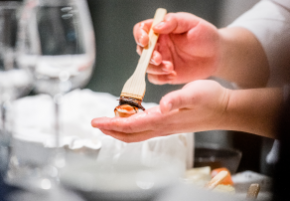- About
- Programs
- Campus Life
- Career Services
- Admissions
- News & Events
- Alumni
Is a Cucumber a Fruit or Vegetable? Explained Simply
Is a cucumber a fruit or vegetable? Discover the answer and why it matters—learn the facts and share your take!
Key Takeaways
- Botanically, cucumbers are fruits because they grow from flowers and contain seeds.
- In cooking, cucumbers are considered vegetables due to their savory taste and common use in salads, pickles, and side dishes.
- Cucumbers offer health benefits, global culinary appeal, and interesting history, making them a versatile and refreshing ingredient worth learning more about.
At first glance, cucumbers seem easy to place on the dinner table. They are crunchy and green and are often added to salads alongside lettuce and tomatoes. However, if you have found yourself wondering whether a cucumber is a fruit or a vegetable, you are not alone. Many foods are grouped based on how we use them, rather than how they grow. This is where the confusion begins.
Cucumbers bring up a fun little mystery. Some people swear they are vegetables, while others insist they are fruits. The answer depends on how you look at it. In science, things are grouped one way; in the kitchen, they are grouped another way.
Is a Cucumber a Fruit or a Vegetable
To figure out the true identity of a cucumber, we need to look at it from two angles. One comes from science, the other from the kitchen. By understanding both the botanical and culinary sides, we can see why this green food causes so much confusion and why both answers make sense.
Botanical classification
Start Your Culinary Journey
Learn the art of cooking in a world-class environment
In the world of science, plants are grouped based on how they grow and how they reproduce. A fruit, botanically speaking, is the part of a plant that develops from the flower and holds seeds. This includes many foods people do not usually think of as fruits, such as tomatoes, pumpkins, and, of course, cucumbers.
Cucumbers grow from the flowering part of the cucumber plant. Once the flower is pollinated, it begins to swell and form what we know as the cucumber. Inside the cucumber, you will find small seeds, which can be used to grow more cucumber plants. This is a clear sign that cucumbers fit the scientific definition of a fruit.
Therefore, scientists see more than just a crunchy salad ingredient when they examine a cucumber. They see a fruit because it meets all the botanical requirements.
Culinary classification
In everyday cooking, the word “vegetable” has little to do with plant biology. It mainly refers to how the food tastes and how it is used in meals. Vegetables are typically savory or mild in flavor. They are often eaten raw in salads or cooked as part of a main dish. This is how most people think of cucumbers.
Cucumbers are cool, crisp, and refreshing. They are hardly ever used in desserts and are rarely sweet. Instead, they appear in garden salads, sandwiches, wraps, and savory side dishes. You might pickle them or pair them with herbs and spices, which adds even more to their vegetable-like character in the kitchen.
Because of this, most chefs and home cooks treat cucumbers as vegetables. The flavor, color, and crunch all suggest that it's a vegetable. Depending on the cooking technique, cucumbers can take on different textures and absorb flavors ranging from acidic to slightly bitter—further reinforcing their role as a vegetable in savory dishes.
Health Benefits of Cucumbers
Cucumbers are more than a crunchy addition to salads. They offer several health benefits that make them a great choice for many diets.
One of the biggest perks is their high water content. Cucumbers are made up of about 95 to 96% water, which helps keep you hydrated, especially in warm weather.
They are also very low in calories. A whole cucumber can contain fewer than 50 calories, making it a smart snack for those trying to manage their weight. In addition to being low in calories, cucumbers contain important nutrients. They offer small amounts of vitamins and minerals such as vitamin K, vitamin C, potassium, and magnesium.
Cucumbers are often recommended in skincare as well. Their cooling nature and antioxidant properties can soothe the skin, reduce puffiness, and calm irritation. That is why cucumber slices are commonly placed over the eyes during spa treatments or included in face masks.
Whether eaten fresh, added to drinks, or used topically, cucumbers are a refreshing and helpful part of a healthy lifestyle. Their simple makeup hides a long list of quiet benefits for the body and skin alike.
Culinary Uses of Cucumbers
Cucumbers are popular in kitchens worldwide for their light, crisp texture and refreshing flavor. Their mild taste makes them versatile, which is why they appear in so many different dishes.
One of the most common uses for cucumbers is in salads. They add crunch without overpowering the other ingredients. You will also find them in sandwiches, where they offer a fresh bite, especially in warm weather. In smoothies, they pair well with fruits like mint, lemon, or berries for a cool and hydrating drink.
Pickling is another popular use. There are different ways to pickle cucumbers, depending on the desired flavor and the cucumber variety. Quick pickles (or refrigerator pickles) are made by soaking cucumbers in a vinegar-based brine and storing them in the fridge for immediate use. Fermented pickles, on the other hand, rely on a saltwater brine and time to develop their sour, complex flavor. Pickled cucumbers—often simply called pickles—are staples in burgers and deli sandwiches or enjoyed on their own. Due to their added sodium and processing, pickles are often listed as a separate category in food guides.
Cucumber varieties differ in texture, flavor, and ideal preparation. Slicing cucumbers are best eaten fresh in salads and sandwiches. Pickling cucumbers are shorter with bumpy skin and hold up better in brines. Lemon cucumbers, round and yellow, have a mild sweetness and are often used in summer salads. White and yellow-skinned cucumbers offer subtle variations and appear in specialty dishes. Some types, labeled “burpless,” are bred to be gentler on digestion.
Cucumbers also feature prominently in global cuisines. In Greece, they’re blended with yogurt, garlic, and herbs to make tzatziki. In the United Kingdom, cucumber sandwiches are a traditional part of afternoon tea. Across Asia, spicy cucumber salads often include chili, sesame oil, and vinegar for a flavorful contrast of heat and crunch.
These savory and refreshing dishes show why most people think of cucumbers as vegetables. Even though science classifies them as fruit, their use in salty and flavorful meals keeps them primarily in the vegetable category in most kitchens.
Fun Facts About Cucumbers
There is a lot more to cucumbers than meets the eye. From ancient traditions to modern science, here are some fun and fascinating facts about this cool plant:
- The heaviest cucumber ever recorded weighed about 13 kg and was grown in the United Kingdom.
- Cucumbers have been cultivated for more than 3,000 years. They were first grown in India and spread across the world through trade and travel. Ancient civilizations such as the Egyptians, Greeks, and Romans included them in their diets.
- In ancient Rome, Emperor Tiberius was so fond of cucumbers that he demanded to eat them every day of the year. His gardeners used moveable frames and early versions of greenhouses to grow them year-round.
- Cucumbers are about 96% water, making them one of the most hydrating foods you can eat. They are great for hot days or when you need a snack that refreshes without adding many calories.
- Cucumbers help reduce puffiness under the eyes, research suggests. Thanks to their cooling properties and antioxidants, they are used in many skincare treatments and home remedies.
- Cucumbers belong to the gourd family, Cucurbitaceae. This plant family also includes pumpkins, melons, and zucchinis. That’s why they share a similar growing pattern and seed structure.
The Best of Both Worlds
Cucumbers are fruits in the eyes of science, since they grow from flowers and contain seeds. However, in the kitchen, their cool, savory flavor earns them a spot among vegetables. From salads to pickles, they play a tasty and refreshing role in dishes around the world.
If you're curious about how to use ingredients like cucumbers in creative ways and want to dive deeper into the culinary world, consider joining Culinary Arts Academy Switzerland. Our programs help you build real skills, explore global cuisines, and bring out the best in every ingredient.
Frequently Asked Questions
What other fruits are mistaken for vegetables?
Tomatoes, bell peppers, eggplants, zucchinis, and pumpkins are all fruits that are commonly treated as vegetables in cooking.
Why do cucumbers taste bitter sometimes?
Bitterness comes from natural compounds called cucurbitacins, which can increase due to stress on the plant from heat, irregular watering, or poor soil.
Can you eat cucumber skin?
Yes, cucumber skin is safe to eat and contains fiber and nutrients, though some people prefer to peel it if it's thick or waxed.
Interested in becoming a world-class chef? Learn more about Culinary Arts Academy Switzerland.






















